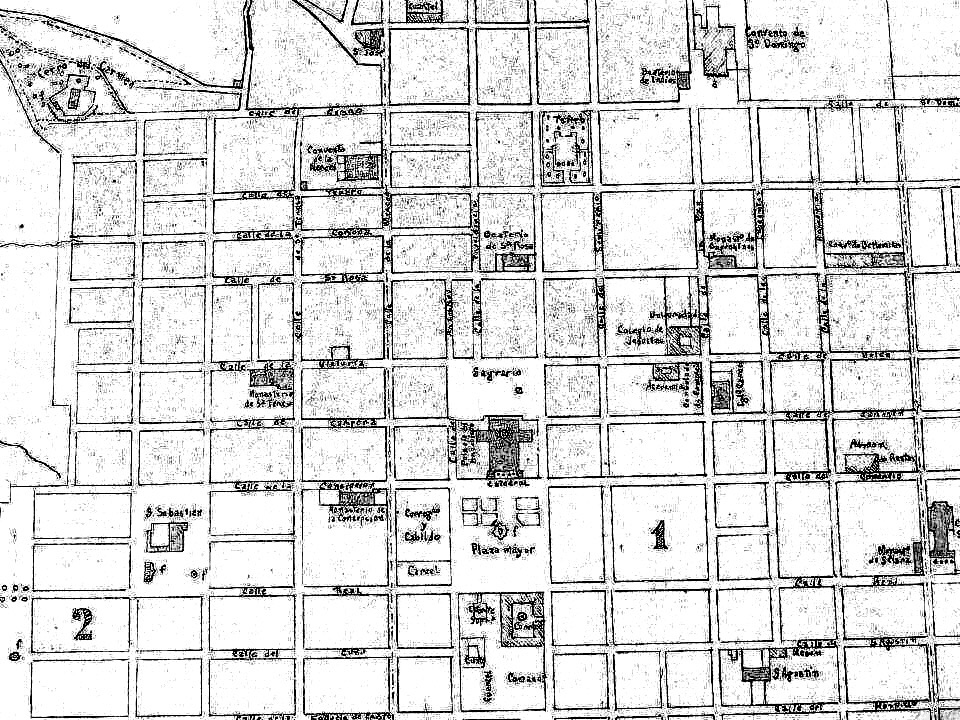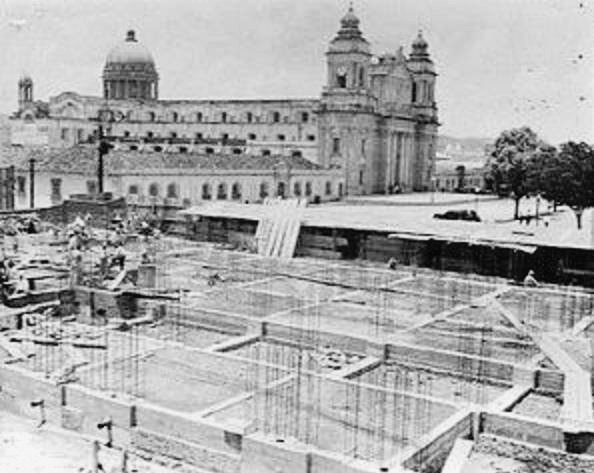National Palace (Guatemala) on:
[Wikipedia]
[Google]
[Amazon]
Known as Palacio Nacional de la Cultura (National Palace of Culture) also known colloquially as "Palacio Verde", it is identified as

 In celebration of the first century of independence in 1919, President
In celebration of the first century of independence in 1919, President
Guatemala City
Guatemala City ( es, Ciudad de Guatemala), known locally as Guatemala or Guate, is the capital and largest city of Guatemala, and the most populous urban area in Central America. The city is located in the south-central part of the country, ne ...
's symbol in its architectural context. It was the most important building in Guatemala and was the headquarters of the President of Guatemala. The building is the origin of all the roads in the Republic and has a spot known as Kilometro Cero (Zero Kilometer).
It is presently a museum and is also used for important acts of the government.
History
Since the beginning of Spanish colonization, a governmental seat was needed. In 1528, the first Government House was built in Santiago de Guatemala in the Valle de Almolonga. Then, in 1549, President Alonso López de Cerrato moved the "Audiencia de los Confines" from Gracias a Dios in Honduras to Santiago de Guatemala. In 1761 President Alonso Fernández de Heredia began the construction of a new seat, under the direction of Spanish Captain and engineer Luis Diez de Navarro.Construction

 In celebration of the first century of independence in 1919, President
In celebration of the first century of independence in 1919, President Manuel Estrada Cabrera
Manuel José Estrada Cabrera (21 November 1857 – 24 September 1924) was the President of Guatemala from 1898 to 1920. A lawyer with no military background, he was a strong ruler (dictator) who modernised the country's industry and transportat ...
placed the first stone for a future palace next to the Plaza de Armas.
The Italian architect Guido Albani was charged with designing the palace, but it never came to pass due to the collapse of the government soon thereafter. Two years later, in 1921, President Carlos Herrera
Carlos Herrera y Luna (26 October 1856 – 3 July 1930) was a Guatemalan politician who served as acting President of Guatemala from 30 March 1920 to 15 September 1920, and President of Guatemala from 16 September 1920 until 10 December 1921.
...
, with the Centenary very close, ordered the Palacio del Centenario to be built in only three months time with a small budget and few resources. It became popularly known as the Palacio de Cartón (Cardboard Palace). However, in 1925 it was destroyed by a fire.
In 1927 President Lazaro Chacón declared a contest for the design of a new palace. The contest was won by the artist Agustín Iriarte, but this project again never came to be.
Finally, in 1932, President General Jorge Ubico
Jorge Ubico Castañeda (10 November 1878 – 14 June 1946), nicknamed Number Five or also Central America's Napoleon, was a Guatemalan dictator. A general in the Guatemalan army, he was elected to the presidency in 1931, in an election where ...
published the basis for the design and construction of the palace, and on July 4, 1937, the first stone was placed. The National Palace was built between January 1939 and 1943. On November 10 of that year, the birthday of President Ubico, the present-day Palace was opened.
1976 earthquake
The building survived theearthquake
An earthquake (also known as a quake, tremor or temblor) is the shaking of the surface of the Earth resulting from a sudden release of energy in the Earth's lithosphere that creates seismic waves. Earthquakes can range in intensity, fr ...
of February 4 of 1976, a magnitude 7.5 on the Richter scale
The Richter scale —also called the Richter magnitude scale, Richter's magnitude scale, and the Gutenberg–Richter scale—is a measure of the strength of earthquakes, developed by Charles Francis Richter and presented in his landmark 1935 ...
.
1982 coup and special jurisdiction tribunals
On March 23, 1982, young officers from the Guatemalan Army deposed PresidentFernando Romeo Lucas García
General Fernando Romeo Lucas García (4 July 1924 – † 27 May 2006) was the 37th President of Guatemala from July 1, 1978 to March 23, 1982. He was elected as Institutional Democratic Party candidate (with the support of the Revolutionary P ...
and replaced him with General Efraín Ríos Montt
José Efraín Ríos Montt (; 16 June 1926 – 1 April 2018) was a Guatemalan military officer and politician who served as ''de facto'' President of Guatemala in 1982–83. His brief tenure as chief executive was one of the bloodiest periods i ...
, who had been director of the Guatemala Military Academy while those young officers were cadets.
On June 30, 1982, Ríos Montt, in a speech called "We are willing to let honesty and justice reign" ("Estamos dispuestos que reine la honestidad y la justicia"), told the Guatemalan people that the government had realized that there were many Guatemalans that were afraid of being killed and that therefore did not apply for the amnesty his government issued in late March. Because of that, he said, the government was going to fight communist guerrillas by any means they wanted, but that they also were going to use open trials. Rios Montt said that in order to accomplish that he had set up "special jurisdiction tribunals" which would judge leftist criminals and that they were going to apply capital punishment to those proven guilty.
These secret tribunals, whose members were appointed by the president but were unknown to the Guatemalan people, performed fast and drastic trials, in parallel to the judiciary system of the country. In the end, 15 people were executed less than a month after they had been captured.
The special tribunals were directly under control of the Defense Secretary, general Óscar Humberto Mejía Víctores, and had their headquarters in the National Palace and lasted until Mejia Víctores himself led a coup d'état that deposed General Ríos Montt on August 8, 1983.
See also
* * * *History of Guatemala
The history of Guatemala begins with the Maya civilization (300 BC – 250 AD), which was among those that flourished in their country. The country's modern history began with the Spanish conquest of Guatemala in 1524. Most of the great ...
* Guatemala Civil War
Notes and references
References
Bibliography
*Further reading
* * * * * ] * * * * *External links
* {{Coord, 14, 38, 34.59, N, 90, 30, 47.62, W, region:GT_type:landmark, display=title Palaces in Guatemala Buildings and structures in Guatemala City Presidential residences Houses completed in 1943 Government buildings completed in 1943 1943 establishments in Guatemala Renaissance architecture